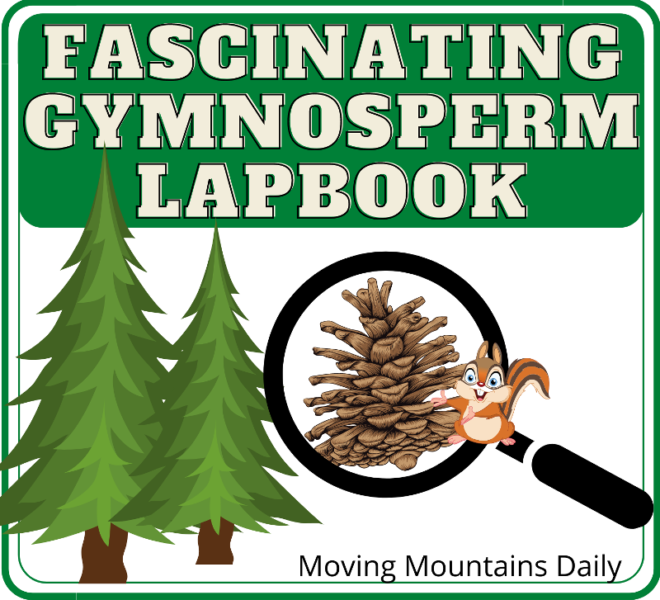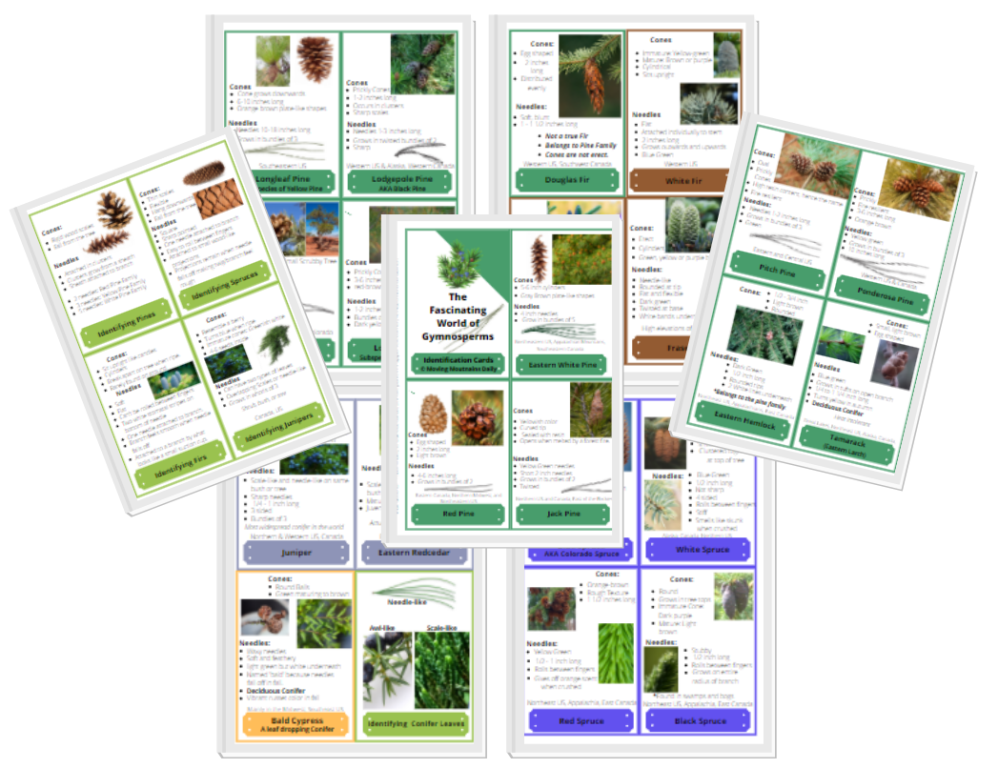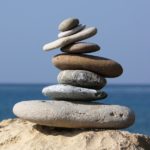After our pinecone labs, Andrew and I set out to identify the different types of conifers. We found out that with some organization, identifying conifers was not that difficult! To help, we have created exploratory lab worksheets and field identification cards which are available at the end of this post. Download now or after you have read the material.
We suggest using this post as a five day (or more) science class. It is less overwhelming for the student (and adult mind) if information is broken down into smaller sections.
Conifer Classification Packet
The Conifer Classification Packet include four family identification cards: Pine, Spruce, Fir, and Junipers. You can print, laminate, hole punch, and then attach the cards to a carabiner on your backpack. The printable worksheets will help you review the material in this post and integrate the facts listed on the Identification Field Guide Cards.
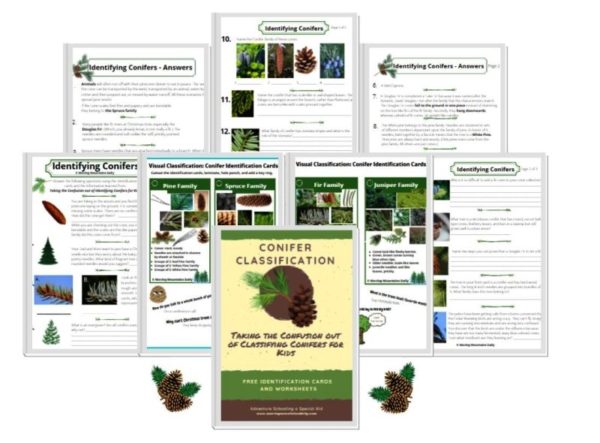
Evergreen Basics
An evergreen is a tree or bush, that stays green all winter long. A subgroup of the evergreens is the conifer family. See that word ‘subgroup‘? That means there are other evergreens that are not coniferous. Coniferous means “cone bearing” and they are just one small group, of a larger group, called evergreens.
Coniferous trees have needle-like, awl-like, or scale-like leaves. Yes, a needle is considered a leaf! They are also cone-bearing gymnosperms. Not sure what that is? Check out our last post, “The Fascinating World of Gymnosperms for Kids“.
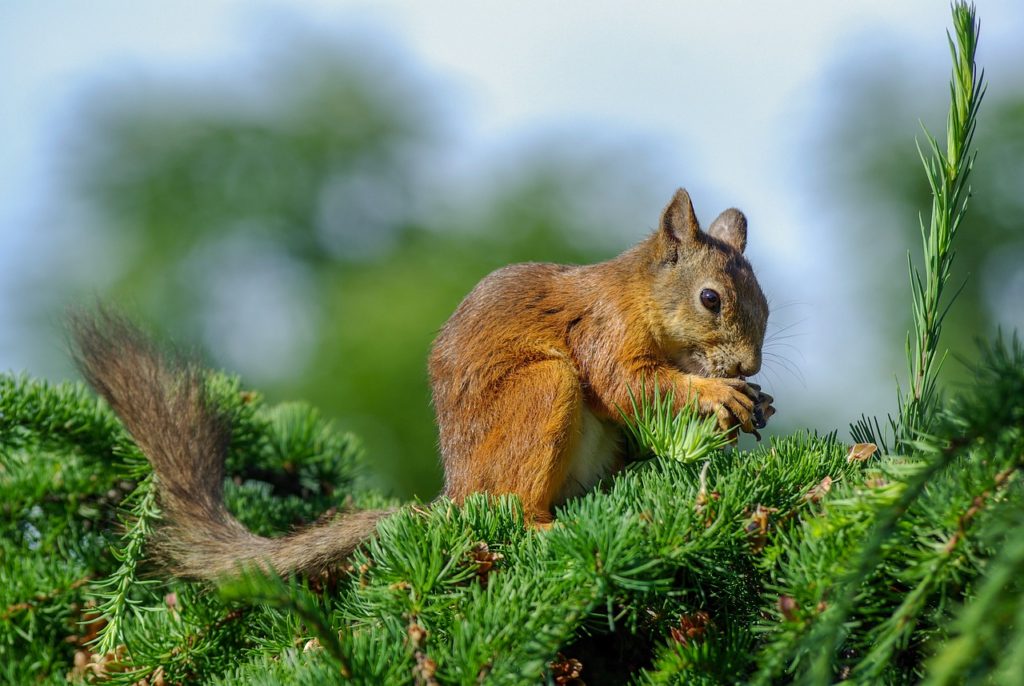
Why do evergreens stay green?
Deciduous trees loose their leaves in the winter. As the days become shorter and cooler, the trees have less sunlight to make food. The process of making food is called photosynthesis. When the tree can no longer provide food for all the leaves, they turn colors and eventually fall from the tree. It is the trees way of conserving food and energy for the winter months.
Evergreens, on the other hand, have a waxy coating on their fine greenery. The wax helps the tree retain moisture, so it has food all winter long and helps the tree withstand harsh northern climates. Therefore, the wax is key!
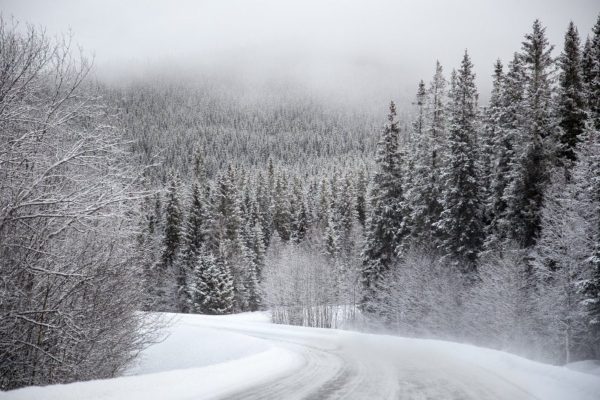
coniferous trees add a touch of green to the landscape.
In summary:
- Evergreens stay green in all seasons
- Not all evergreens are conifers
- Conifers bear cones
- Conifers keep their needles all winter long
- However…. not all conifers are evergreens! Here is why:

Deciduous Conifers
There is this other group of trees called Deciduous Conifers. They are not evergreens, because they drop their leaves. These particular conifers are bald or naked during the winter months. Because they bear cones they are conifers, however, they lose the term ‘evergreen’ because they don’t retain their greenery all year round. Examples of deciduous conifers are Larch trees and Cypress trees, like the Bald Cypress. We’ll talk more about these later.
Identifying Conifers
Conifers mostly fall into the categories of: pines, firs, spruces, or junipers. If you take the time to look at these categories closely you will see that the characteristics of each will help you identify the different coniferous trees.
There is and always will be some confusion in the botany world, because humans were involved in naming the conifers. It boils down to whether you want to use the genus or the family – or the person’s name who discovered the conifer.
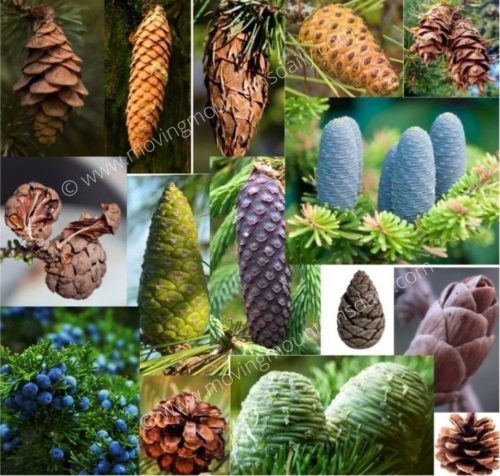
Conifers – Ancient Trees
I want to take a minute and boast that conifers hold the record for the world’s tallest, thickest, largest, and oldest living trees! Bristlecone pines are native to the Rocky Mountains are among the world’s oldest organisms. They are gnarled and resilient.
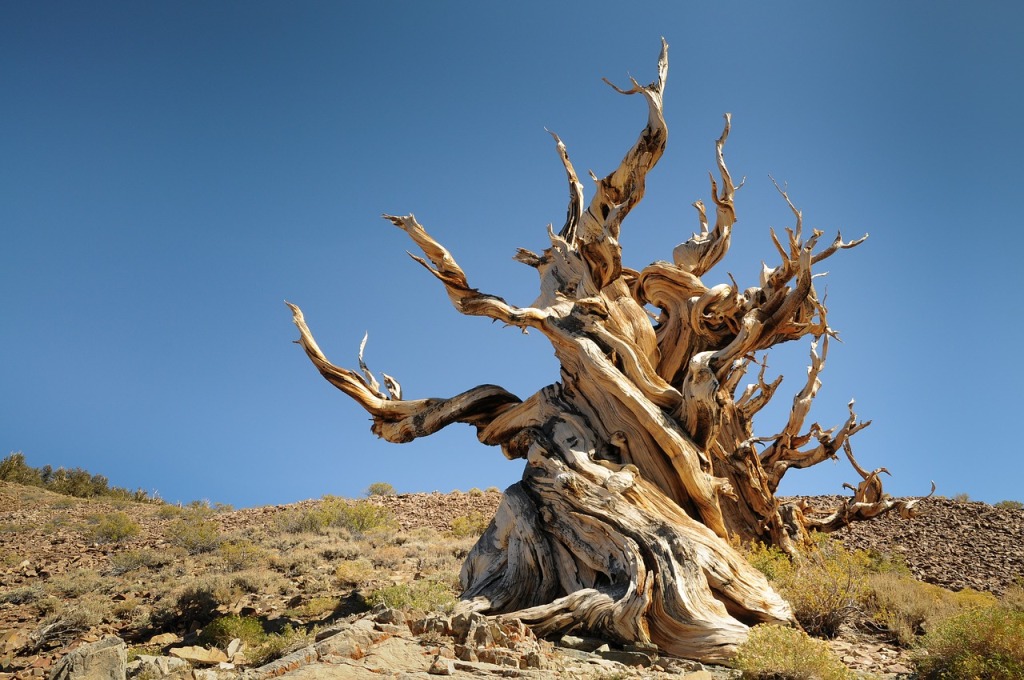
Pines
Pine needles vary in color but they all grow in bundles from a sheath, or fascicle, attached to the branch. We can tell what pine family a tree is from by looking at how many needles are in a bundle.
- Bundles of 2 needles: Red Pine Family
- Bundles of 3 needles: Yellow Pine Family
- Bundles of 4 needles: Ponderosa Pine
- Bundles of 5 needles: White Pine Family
Pine needle length, color and the color of bark are not the best determiners when identifying conifers. Needle color can vary by season, region, and climate. Bark changes color and texture with age.
All pine family cones are hard, woody, and durable. Each tree has their own type of cone. The White Pine has a long 4-5 inch cone that has a grayish tint and covered in resin, whereas the Red Pine has 2 inch, brown cones. One fact remains: Only pine trees can produce pinecones!
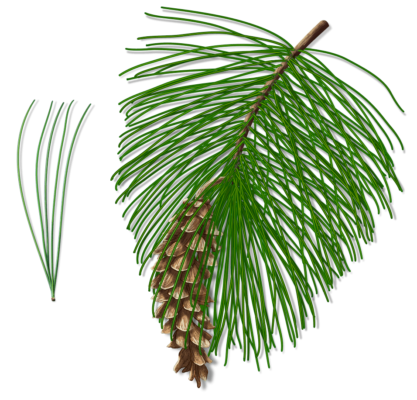
Spruces
The needles of a spruce are sharp and uncomfortable to touch but the needles are flat and easy to roll between the fingers. Spruce needles are singular and attached directly to the branch by way of a woody projection. When the needle falls from the tree the woody projection stays attached, making the branch feel rough.
Spruce cones hang downwards, the scales are papery feeling and the cone is flexible. They fall from the tree when ripened.

Firs
Fir needles are soft and flat. Unlike the spruce, you can’t roll them between your fingers. Firs can also be identified by the fact that needles are attached individually to the branch by a little suction cup. When the needles shed the little suction cup falls with them leaving the branch feeling smooth.
Firs can also be identified by two white stomata bands underneath the leaf. These white stripes are actually tiny pores like we have on our skin. They enable the leaf to breathe. The stomata are tiny openings take in carbon dioxide and release Oxygen.
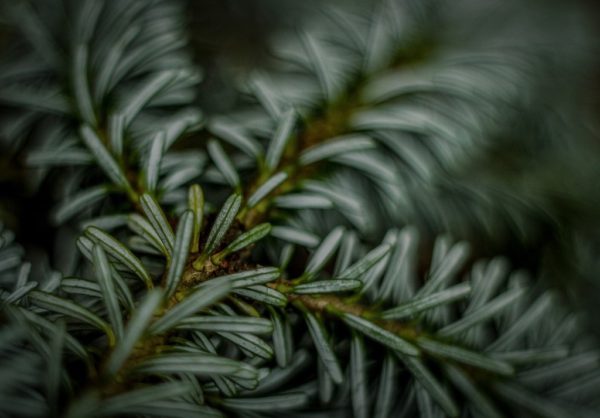
Each little pore within the stomata has two guard cells that look like a pair of lips. The guard cells control moisture when the lips open or close. If it rains, the lips close to keep water out and in the winter or dry season it helps keep water in. By the way, stoma is singular and stomata is the plural form.
The cones on the fir trees sit upright like cylindrical candles on a Christmas tree. When ripe, they shatter to release their seeds. The only parts of the fir cones that you will find is the core and scattered scales.

The Douglas Fir is Not
The Douglas Fir causes a bit of a stir in the botany world because it is not a fir, yet it bears the ‘fir’ name. It was named in the 1800s after the Botanist, David Douglas, who discovered the species. The name in Latin means “False Hemlock”.
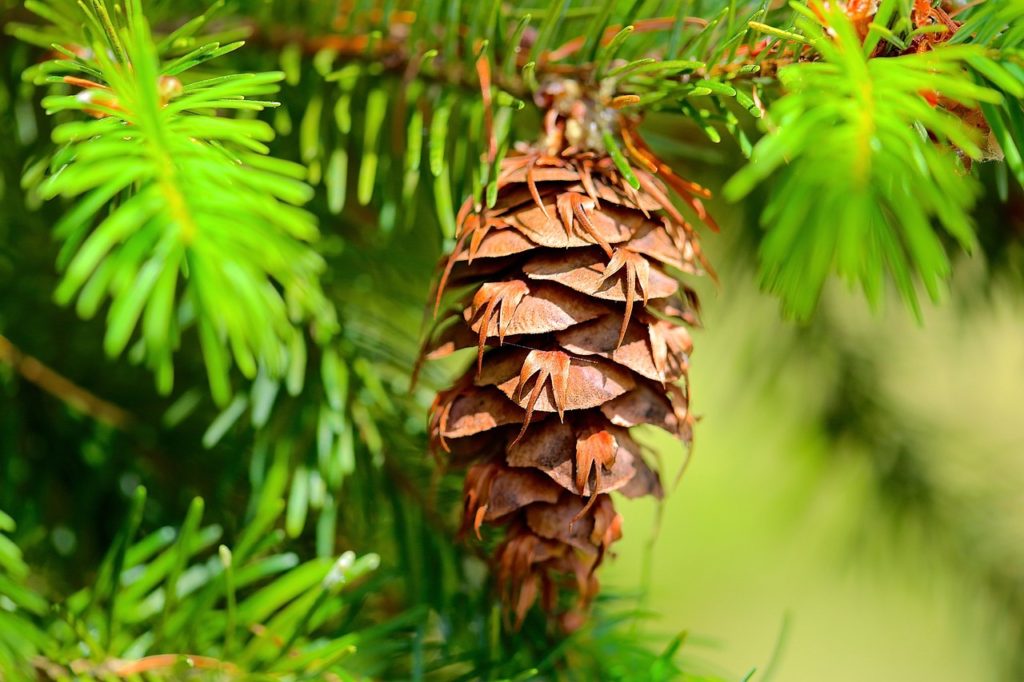
There are several means to prove that a Douglas Fir is not a true fir, even without understanding the scientific history. First of all, the cones hang downwards and do not sit erect like a true fir. Secondly, one can collect whole cones underneath the tree. If it were a true fir, the cones would have shattered on the tree.
The Douglas Fir is an evergreen and a conifer, in fact it is actually its own distinct species. One fact remains constant – Douglas Firs make awesome Christmas Trees!
Cedars, but mostly Junipers
The Eastern Redcedar, is actually a slow growing Juniper. There are four types of true cedars, three grow in the Mediterranean region and the fourth is found in the Himalayan Mountains.
The leaves of the Eastern Redcedar are scale-like. Older growth is blunt while the new growth can be long and sharp. At a closer look, the scales are small and overlapping and look more like they are covering the branch in chains.

Juniper cones look like little berries. They can be light green, a white-ish color or blue like a blueberry when ripened. The berry-like cones are female and protect their seeds with wax covered, scale-like flesh. Inside the cones are 1-4 seeds.
Birds, especially the Cedar Waxwing dine on these delectable cones. Sometimes if the cones are fermented the birds will become intoxicated and act crazy. They can’t fly a straight line, they miss their intended landing targets, hit doors, cars, and sometimes even people. Intoxicated flight is dangerous and deadly for birds.
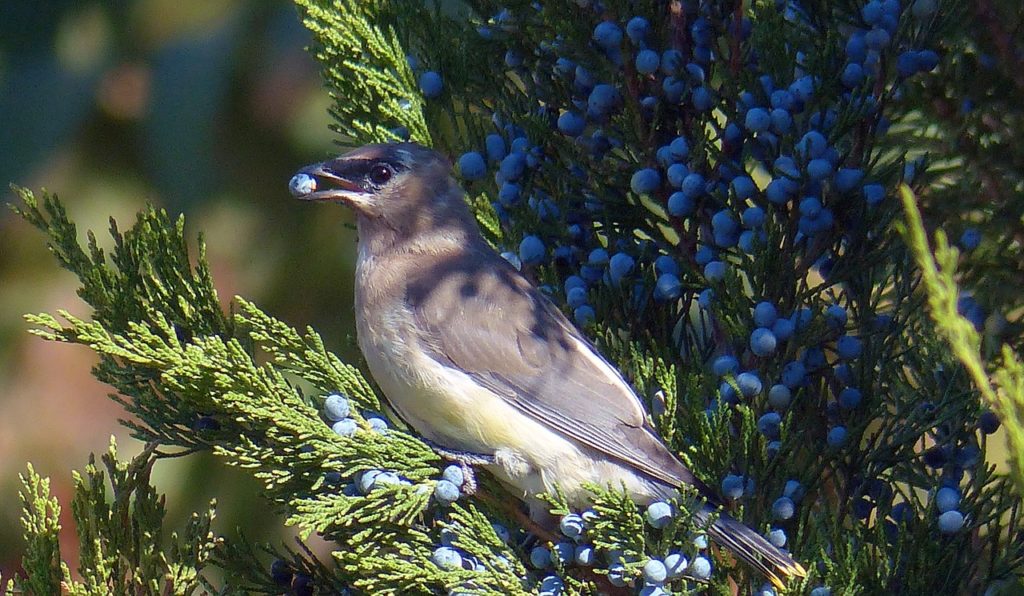
Juniper cones should only be picked when they have deepened to a deep blue color. After soaking for several days, the cones can be planted. It will take about six months for the seeds to grow, provided you keep them outside and prevent the soil from becoming dry. If you choose to try and grow a seedling from a Juniper seed, let us know! It will take a lot of patience to wait for this experiment.
The Bald Cypress
The Bald Cypress is a deciduous conifer and earned its name because of its early balding appearance in the fall. I recently stumbled across one of these breathtaking feathery, coniferous trees at an arboretum (a botanical garden). It is actually a swamp tree, yet does quite well in urban areas. The cones of the Bald Cypress caught my eye because they look like round, sectioned soccer balls.
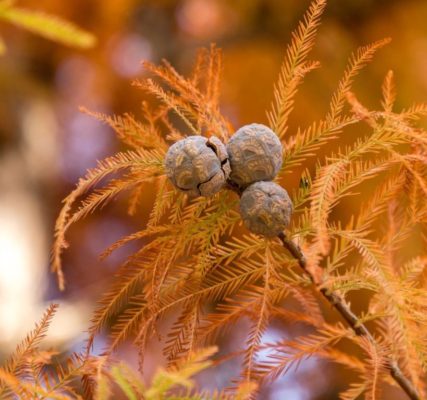
The feathery leaves look nothing like a conifer but they are incredibly beautiful and the tree has a graceful, stately look.
SO HOW DO WE
REMEMBER ALL THIS?

That was a lot of information to digest! When scientists come across this same problem, they have methods of organizing and classifying data in order to understand the living world. We can help!
The Fascinating Gymnosperm Lapbook
Check out our The Fascinating Gymnosperm Lapbook. It is perfect for teaching, mastering, and reviewing!
Introducing our new digital download line!
The Gymnosperm Identification Field Guide Packet
Ready to do some field work and identify conifers? The identification cards included in the lab worksheets at Taking the Confusion out of Identifying Conifers for Kids are so popular that we are honoring requests for a more extensive collection. Here is our new color-coded field guides!
The Gymnosperm Identification Field Guide Packet set includes 5 Identification Category Cards, as well as 22 types of species. Identification field guide cards requires kids to use critical thinking and scientific deduction. Like all thing’s science, there is a process which begins with determining the species and then gradually narrowing it down. Check out these new color coded field cards in our new digital download section!
Field Trip Time!
After completing the worksheets, we encourage you to take your new knowledge on an outside field trip to identify the conifers you find. This might be a walk in your neighborhood, a visit to a local park or an arboretum. We highly suggest finding the local arboretum!
Drop us a comment and tell us about your adventures and the conifers you find!
